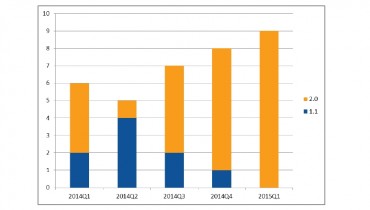PALO ALTO, Calif., Aug. 11 (Korea Bizwire) – Kiteworks, the leading platform for ensuring regulatory compliance and effectively managing risk with every send, share, receive, and save of sensitive content, announced today that Kiteworks empowers organizations to create dedicated Private Content Networks for internal and external sensitive content communications that ensure zero-trust protection and compliance. Kiteworks customers retain control of their data, including encryption keys, whether their Private Content Network resides in the cloud or on-premises. As a result, rogue nation-states, cybercriminals, law enforcement agencies, and cloud office application providers cannot gain access to Kiteworks’ customers’ critical information.
Kiteworks Delivers the Private Content Network
Unlike other solutions that approach only one or some of the privacy and compliance requirements associated with sensitive content communications, Kiteworks assumes a zero-trust approach to sensitive content communications privacy and compliance. This breaks down the silos separating the different communication channels and associated metadata, resulting in a Private Content Network where policies and controls can be consistently applied across communication channels—whether they are based on-premises or in the cloud. In addition to driving efficiencies for IT, security, privacy, and compliance groups, Kiteworks-enabled Private Content Networks maximize risk protections with security capabilities, such as antivirus, antispam, data loss prevention (DLP), and advanced threat prevention (ATP), that are centrally applied with every exchange of information entering and leaving an organization.
Most organizations utilize multiple communication channels to send and share sensitive content—email, file sharing, file transfer, managed file transfer, web forms, and application programming interface (API) protocols. Organizations also use numerous tools for tracking, controlling, and securing their content communications. A recent study by Kiteworks found that over two-thirds of organizations use four tools or more—creating inefficiencies and a disaggregation of syslog metadata.1
Rogue nation-states, organized crime syndicates, and lone cybercriminal actors understand the value of confidential information: The number of reported cyberattacks and data breaches increased 15.1% in 20212 and the average cost of a data breach grew to $4.35 million.3 The aforementioned study by Kiteworks also revealed that almost 6 in 10 organizations rank risk of external cyberattacks, such as malware, ransomware, and distributed denial of service (DDoS), as their top or second highest concern when managing multiple content communications systems.
Applying Zero-trust Security to the Private Content Network
One of the driving factors behind data breaches and their spiraling costs is that many organizations fail to protect their private content sent and shared digitally. “With many organizations adopting a zero-trust security architecture, organizations must employ comprehensive security monitoring, granular risk-based access controls, and system automation with the objective of protecting critical data in real time,” said Tim Freestone, Chief Strategy Officer at Kiteworks. “The Kiteworks platform enables organizations to create Private Content Networks based on zero-trust security principles that enable them to achieve situational awareness of content, users, and system activity while ensuring content controls align with compliance requirements around content type, user access, and risk profiles.”
Yet, zero-trust sensitive content communications privacy and compliance are lacking in many organizations. For example, 57% of organizations do not manage and restrict third-party access to folders and files using capabilities such as content permissions, expiration, locking, and versioning. They also fail to track and record user access to sensitive folders and files, such as who viewed a document and when, who accessed the document and when, who downloaded the document and when, and who shared a document and when.
“Just as organizations assume a zero-trust approach with Virtual Private Networks that protect their network perimeters, we also recommend that they have a Private Content Network to guarantee the privacy and compliance of content sent digitally and shared through and external to their network,” said James Bearce, VP of Professional Services at AccessIT. “Kiteworks enables our clients to aggregate sensitive content communications into one centralized platform that provides streamlined efficiencies while integrating with their existing security investments for simplified management and reduced risk. The combination of log metadata into a unified repository also accelerates remediation and recovery efforts, providing actionable incident response and compliance reporting.”
About Kiteworks
Kiteworks’ mission is to empower organizations to effectively manage risk in every send, share, receive, and save of sensitive content. The Kiteworks platform provides customers with a Private Content Network that delivers content governance, compliance, and protection. The platform unifies, tracks, controls, and secures sensitive content moving within, into, and out of their organization, significantly improving risk management and ensuring regulatory compliance on all sensitive content communications.
Media Contact
Ian Sturgeon
Sturgeon Creative
(303) 902-2834
ian@sturgeoncreative.com
1 “2022 Sensitive Content Communications Privacy and Compliance Report,” Kiteworks, April 2022.
2 “2022 Data Breach Investigations Report,” Verizon, 2022.
3 “2022 Cost of a Data Breach Report,” IBM and Ponemon Institute, 2022.
Source: Accellion USA LLC via GLOBE NEWSWIRE








